Covid 10/20/22: Wait, We Did WHAT?
post by Zvi · 2022-10-20T21:50:00.878Z · LW · GW · 16 commentsContents
Executive Summary The Numbers Predictions Deaths Cases Variants Booster Boosting Think of the Children Long Covid Study Suffers From Sample Bias Another Long Covid Study Suffers From Sample Bias Long Covid Claims Framed To Mislead Public Physical World Modeling Can We At Least Ban Gain of Function Research? Permanent Midnight You Want It To Be One Way Happy Birthday, Bob Wachter Other Medical, Medical Science and Pandemics News None 16 comments
The what, in this case, was the type of thing that could cause another pandemic:

This has not made enough people very angry, and is insufficiently widely regarded as a bad move. It happened, and we are paying for similar things to happen again.
There’s a section on that below (you can Ctrl-F for Gain of Function).
It was a surprisingly news-filled week for Covid in other ways as well. None of the other developments should scare you.
Executive Summary
- We did Gain of Function research. Such research must stop.
- New variants are coming, unclear how big a wave might follow.
- CDC adds Covid-19 to childhood vaccination schedule.
Let’s run the numbers.
The Numbers
Predictions
Prediction from last week: 234k cases (+0%) and 2,500 deaths (+2%).
Result: 223k cases (-5%) and 2,319 deaths (-6%).
Prediction for next week: 218k cases (-3%) and 2,160 deaths (-7%).
Now that the decline sustained itself past the holiday and its aftermath, we can be confident that existing strains continue to be on their way down. The question now shifts to the new variants, and when, whether and to what extent they will cause trouble. See the variant section for further discussion of this. Once again, the pandemic is ‘resetting’ in this fashion.
Deaths

Indiana didn’t report deaths or cases last week and this week likely filled in the backlog, which is probably most of why the Midwest went up instead of down.
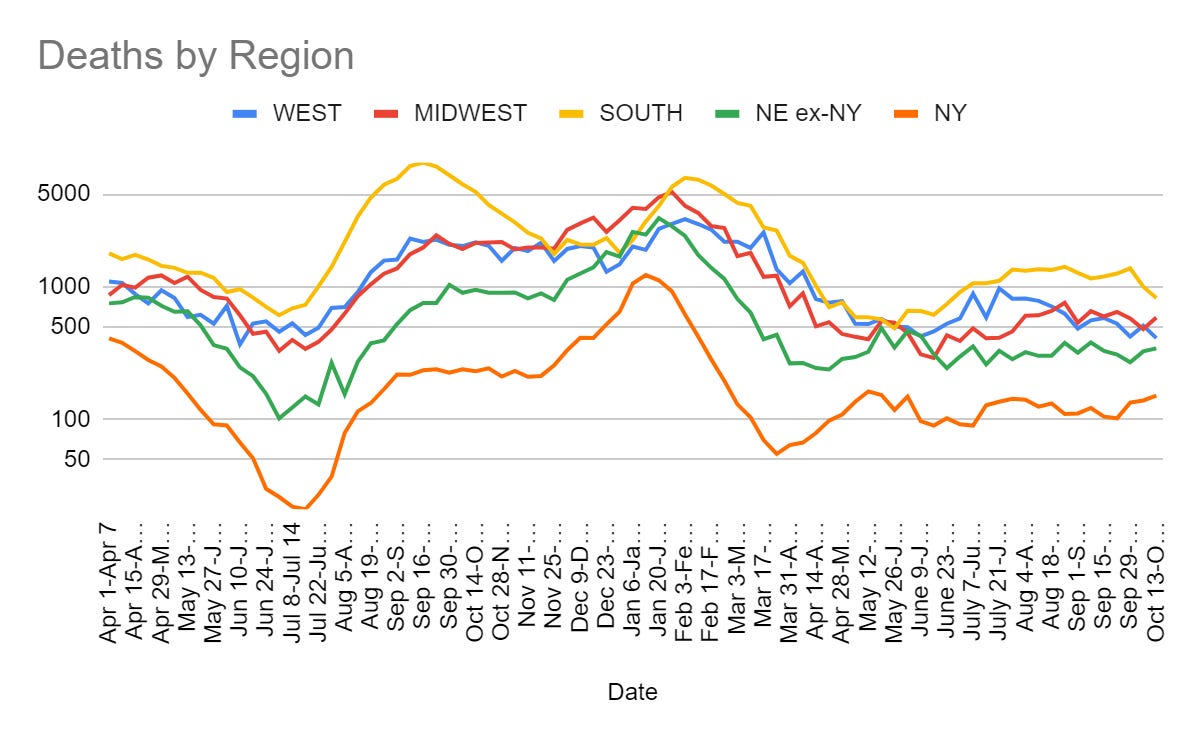
Cases

The south continues to decline, half of which is Mississippi and North Carolina not reporting cases. I chose not to adjust.
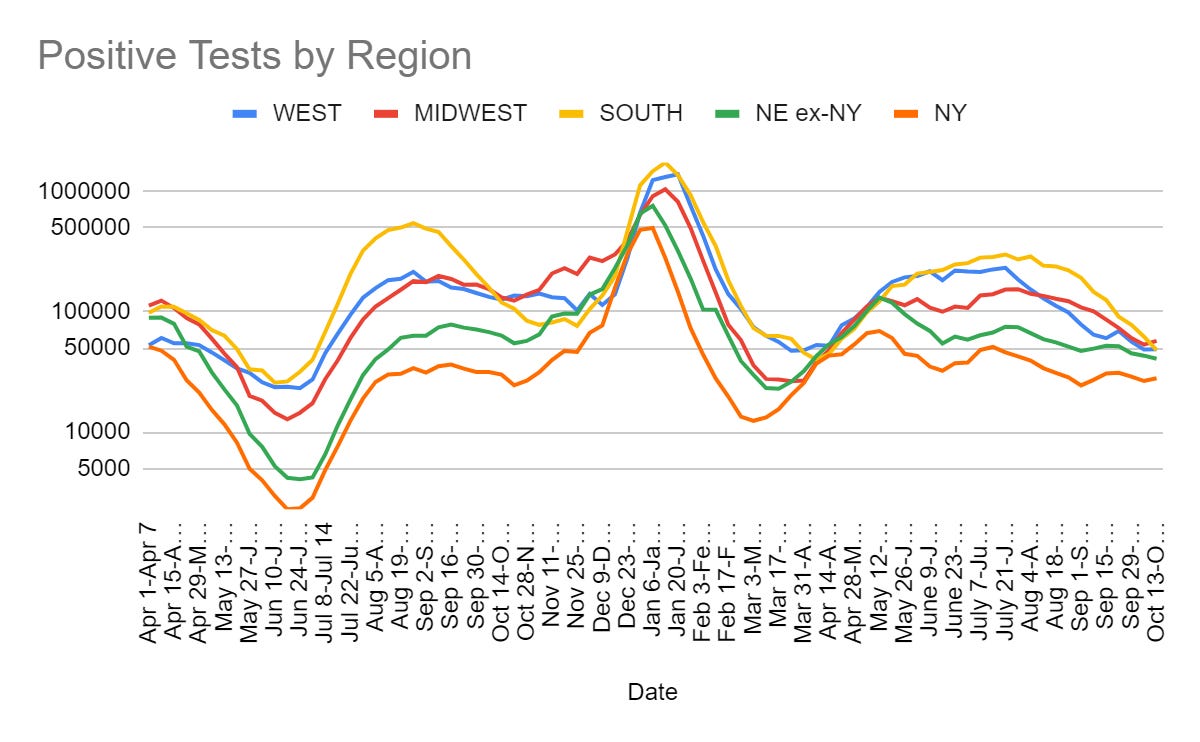
Variants
Paper says BA.2.75.2 ‘exhibits extensive escape from neutralizing antibodies,’ which is not news.
Which new variant will take over next?

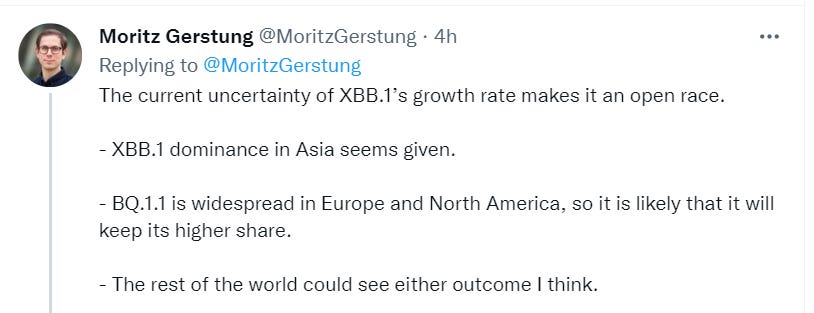

In the equilibrium model, any reproduction advantage is scary, since it will continue to compound until behaviors adjust or enough people get infected. What we have learned over the last few years is that there is a big reproduction advantage to being the new variant and starting from a small base. It takes a huge edge during growth to be the kind of game changer that Alpha, Delta and Omicron were.
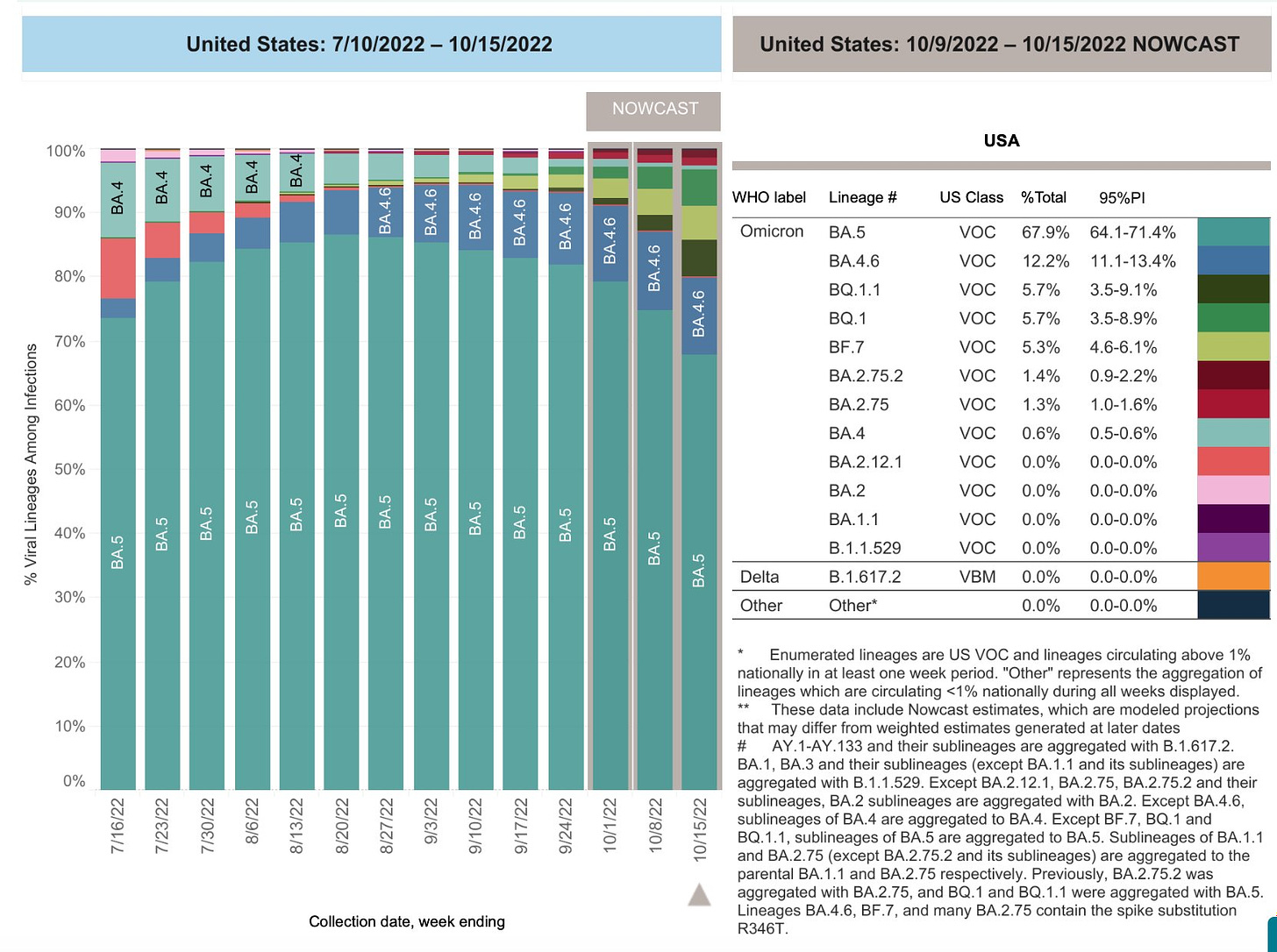
It is clear that BA.5 has peaked and is in decline, with BQ.1.1 looking most likely to be next and looking like it has a higher reproductive advantage than Moritz is suggesting. That is enough relative growth to be somewhat worrying. It looks like more than the ‘10% advantage’ I see quoted in places like this Andy Slavitt thread. If I was convinced the advantage was only ~10%, I would be at least as confident as the 80% Slavitt reports from scientists that the winter will be highly manageable.
As an alternative perspective, looking at variant groups as levels rather than looking at individual variants.

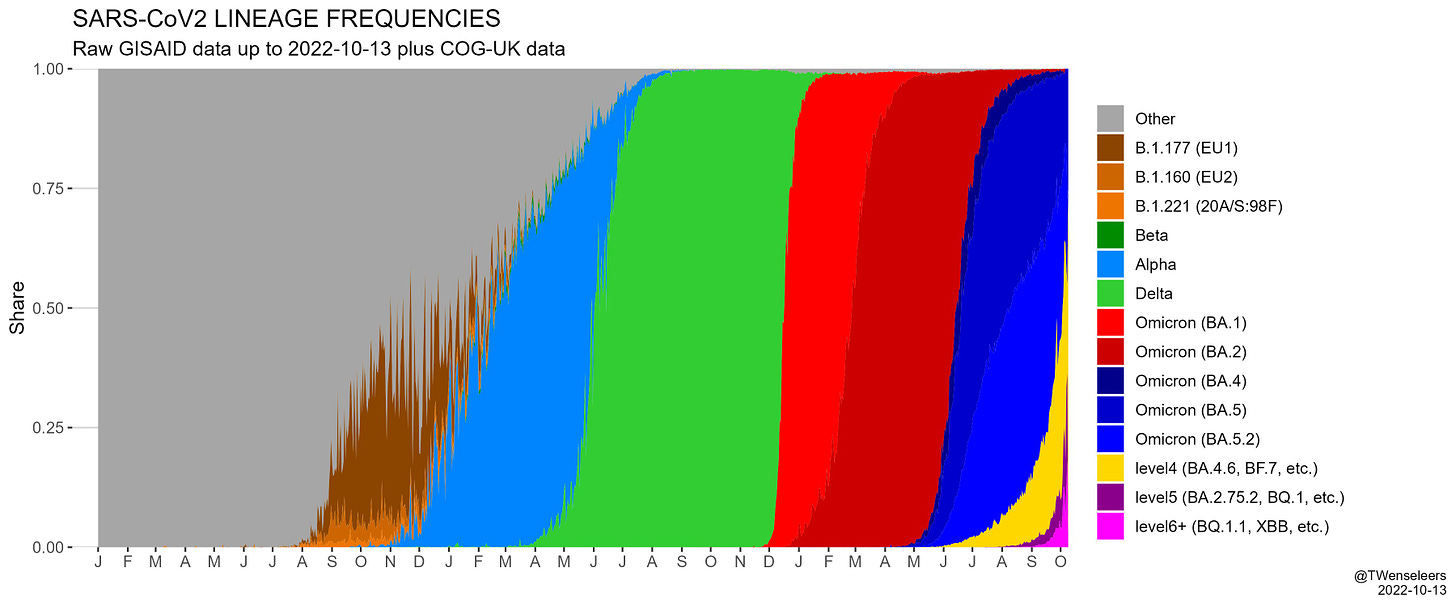



As we saw last week, this is very concentrated in Germany and Austria, and to a lesser extent France. Graphs like this are effectively somewhat misleading in isolation.

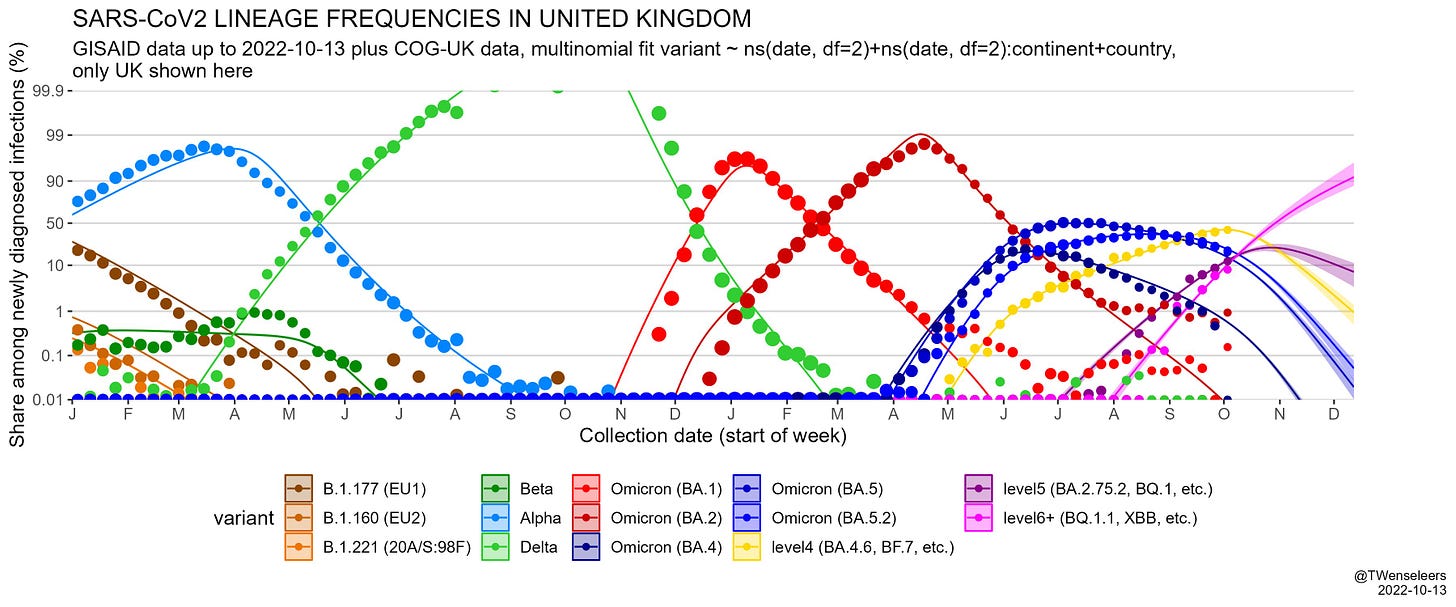
He gives a variety of other charts, including many variants of the one above. The variations for other nations all look broadly similar.

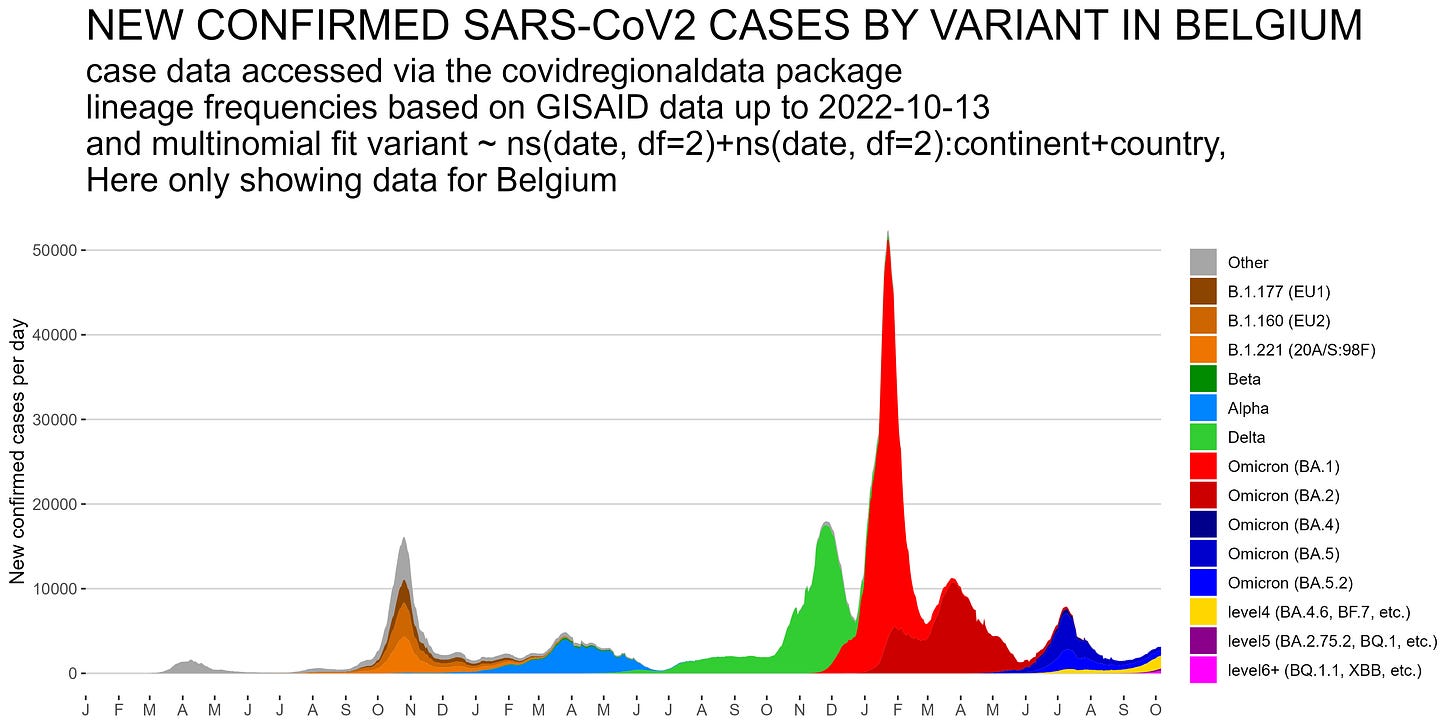
An underappreciated fact is that case counts effectively fully reset from scratch every time a new variant takes over. If Western Europe (or at least Germany) is experiencing a surge of Level 5 cases now, and the big winter wave is going to be Level 6, then the current case counts don’t matter for the future local path of the pandemic. At all.
Thus, we can make statements like this, which are relatively clear.

Cornelius Roemer says on October 13 that variants like BA.4.6 are not yet impacting case counts much. This means that current case counts are still mostly irrelevant to future case counts.
(Global cases count in terms of the mutation rate, and past cases matter for spread.)
Think about the history of the pandemic in light of this. Original → Alpha → Delta → BA.1 → BA.2 → BA.5 → Level 4+, at a minimum. Each time, the case level effectively reset, and it will happen again. The underlying conditions have a remarkably stable equilibrium at their heart.
Booster Boosting
New bivalent boosters approved for kids, Walgreens was distributing them that day.
CDC makes case for new boosters by making case that the existing vaccine regime is inadequate, illustrating how far they can slant their data when they need to make a case to ACIP.
Moderna’s updated booster looking good.

Once I’d like to see such tests not already be obsolete. What we care about going forward are level 6+ (or at least 5+) strains, this is stuck at 3.
Think of the Children
CDC is adding the Covid-19 vaccines to their immunization schedule. This will allow families to get free access to the vaccine. I do find the headline ‘kids get free Covid shots they were already getting for free’ a little weird, but sure.
Does this mean the CDC is mandating childhood Covid vaccinations, or not?
No. This is not a mandate. It does enable such mandates by states. This is more of a necessary step for a mandate to exist rather than a sufficient step, and is in line with their other recommendations.
Also, remember that CDC ‘recommends’ you not eat raw cookie dough.
This is the case that a mandate is still, de facto, exactly what CDC is doing.
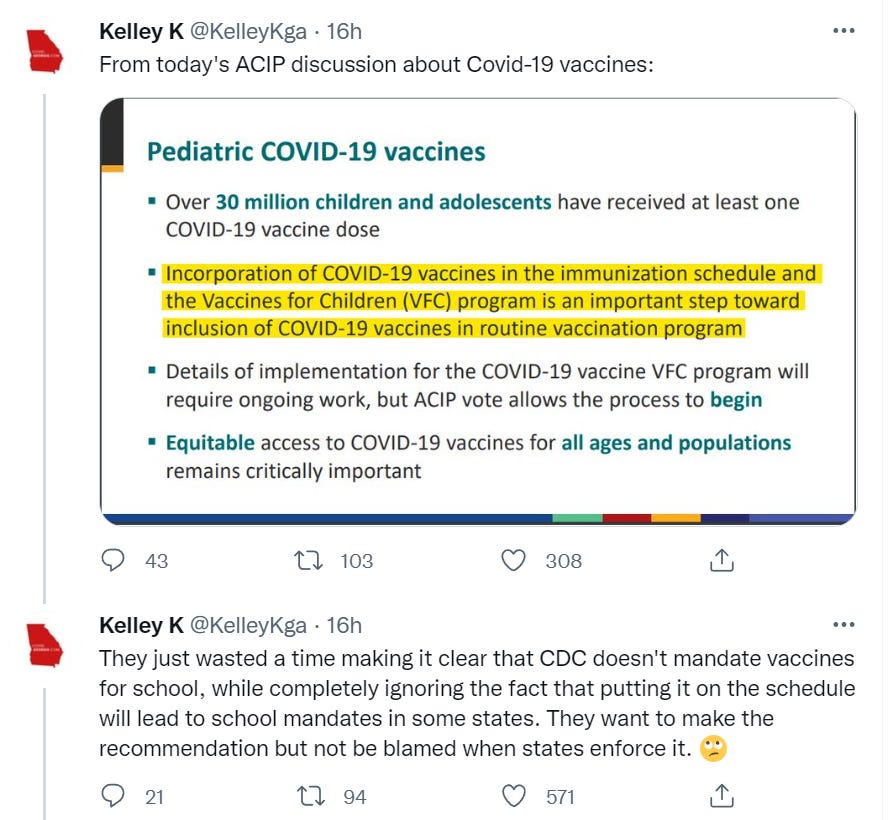
Or:

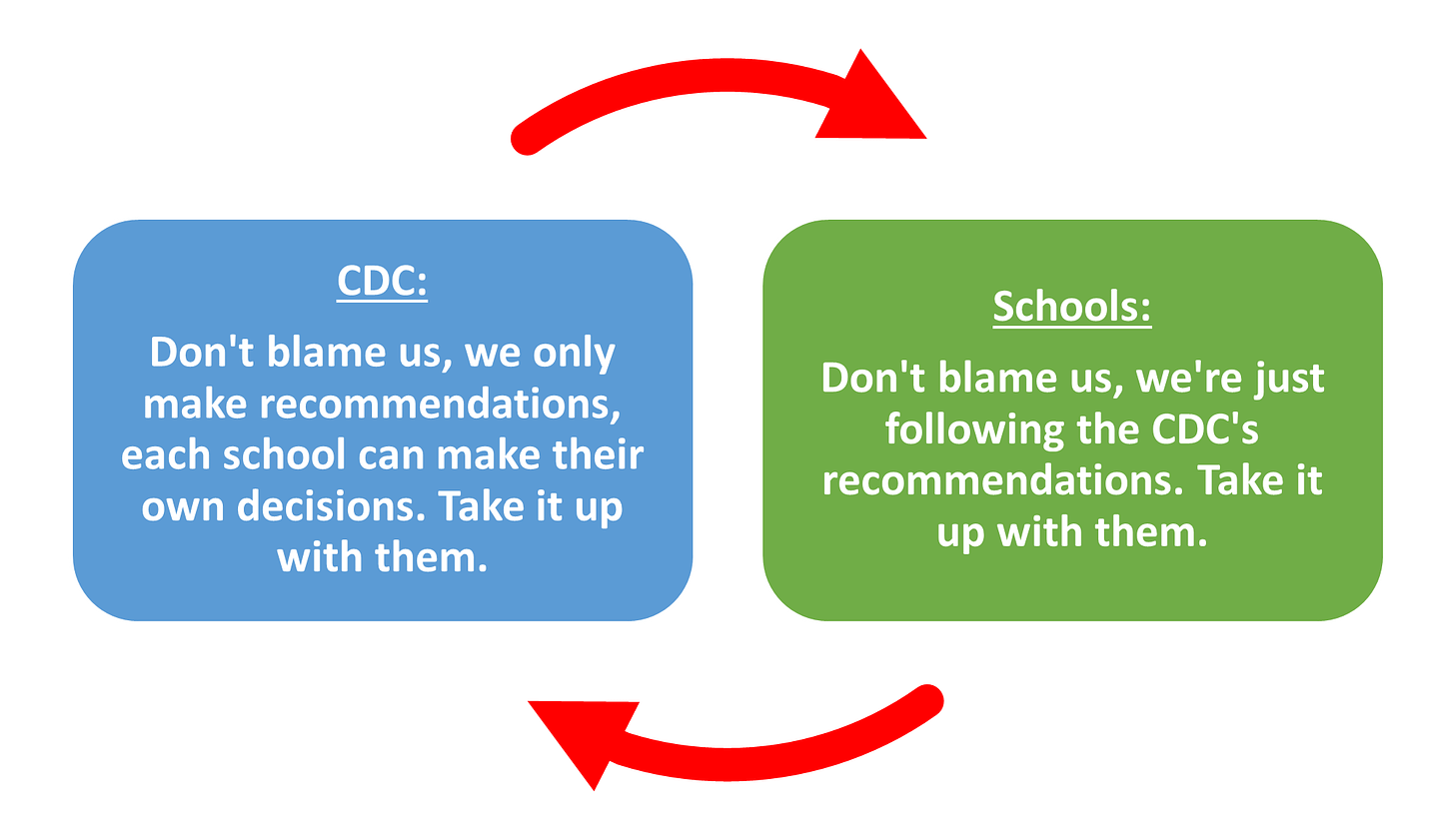
That exact dynamic certainly happened with many other CDC ‘recommendations.’
(There are also those who are making less than honest claims, of course.)
The counterpoint is that states do various things and the CDC mandates are not automatically followed.

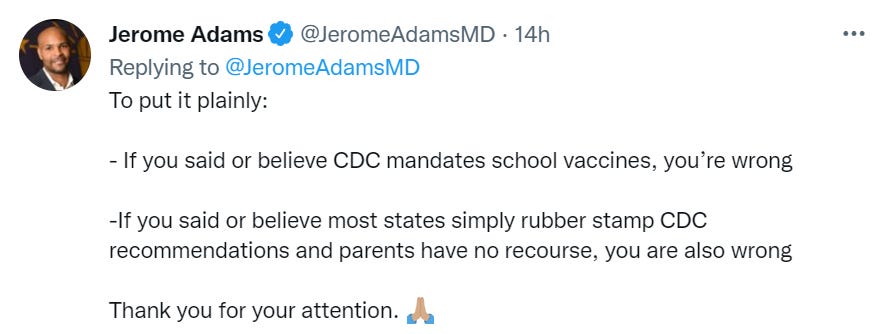
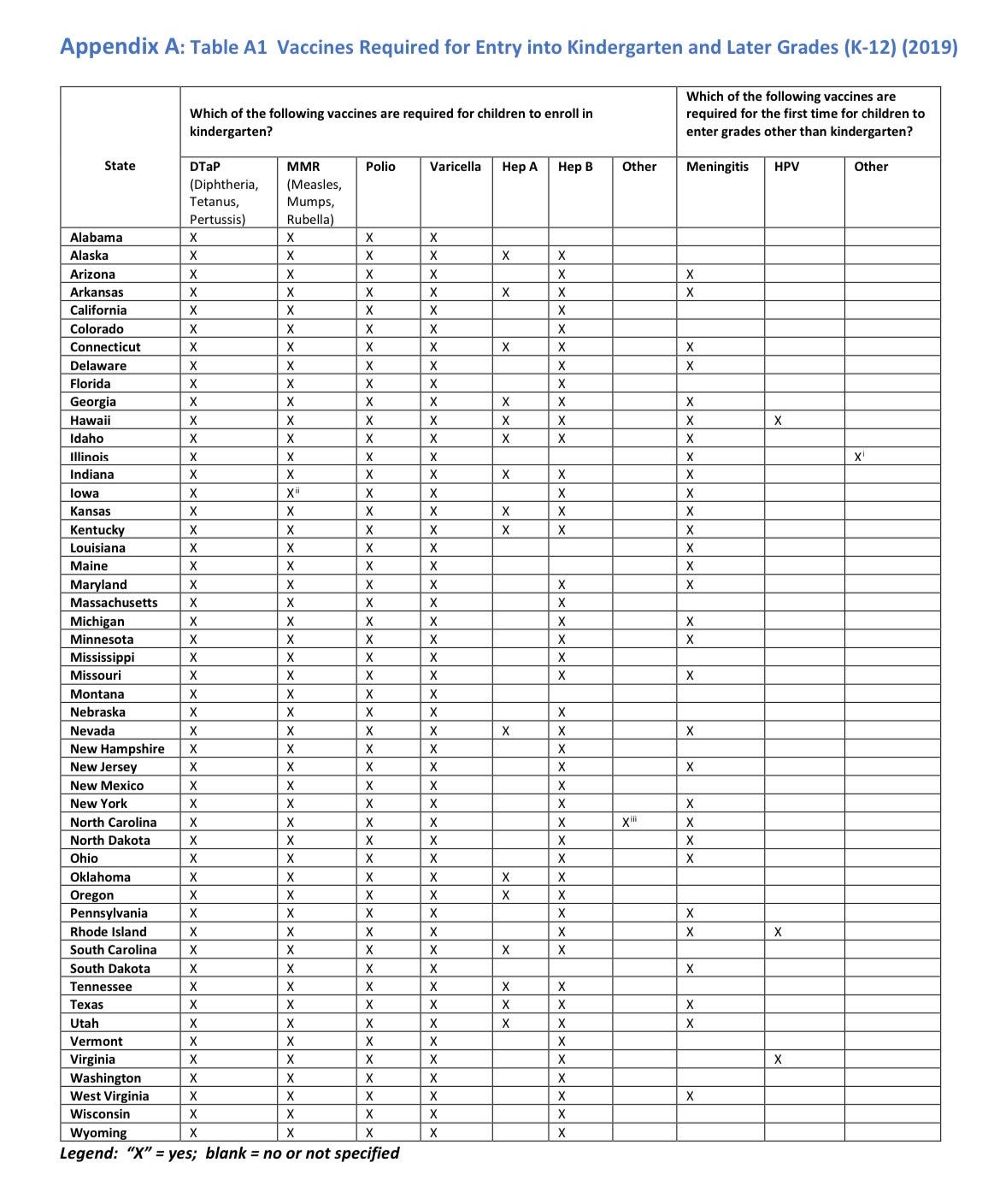
For reference, here is the CDC schedule. So, for example, Hep A is on the CDC schedule. Many states, including blue states, do not mandate it. Others do.
Logically, the two sides agree with each other here. There is no difference here between ‘CDC scheduling means at least some states will mandate the vaccine’ and ‘CDC scheduling means that only some states will mandate the vaccine.’
If the CDC were to choose to not put Covid-19 vaccines on the schedule, they would not become routine, and states would not require them.
One could reasonably advocate for that decision. It is especially reasonable given the worry that including Covid-19 could weaken adherence to and trust in the rest of the schedule, and given access to the vaccine is already free for everyone. As a matter of procedure, I don’t see how the CDC had any practical choice.
I definitely would not mandate the Covid-19 vaccine for school attendance. Doing it for college is annoying enough. Doing it for primary school would be a huge disaster. California seems to be flirting with doing it. Washington DC is doing it starting in January 2023, which I predict will not go well.
Hopefully few if any locales are this stupid.
Long Covid Study Suffers From Sample Bias
This week’s central example is somehow worse than usual. The default is for researchers to be making an honest attempt to measure Long Covid under difficult circumstances that render their conclusions meaningless. I sympathize.

Global. Social. Media. Survey. This is fine. In principle. There is nothing wrong with taking an online survey.


Unless you bury the obvious limitations to punish it in a journal.
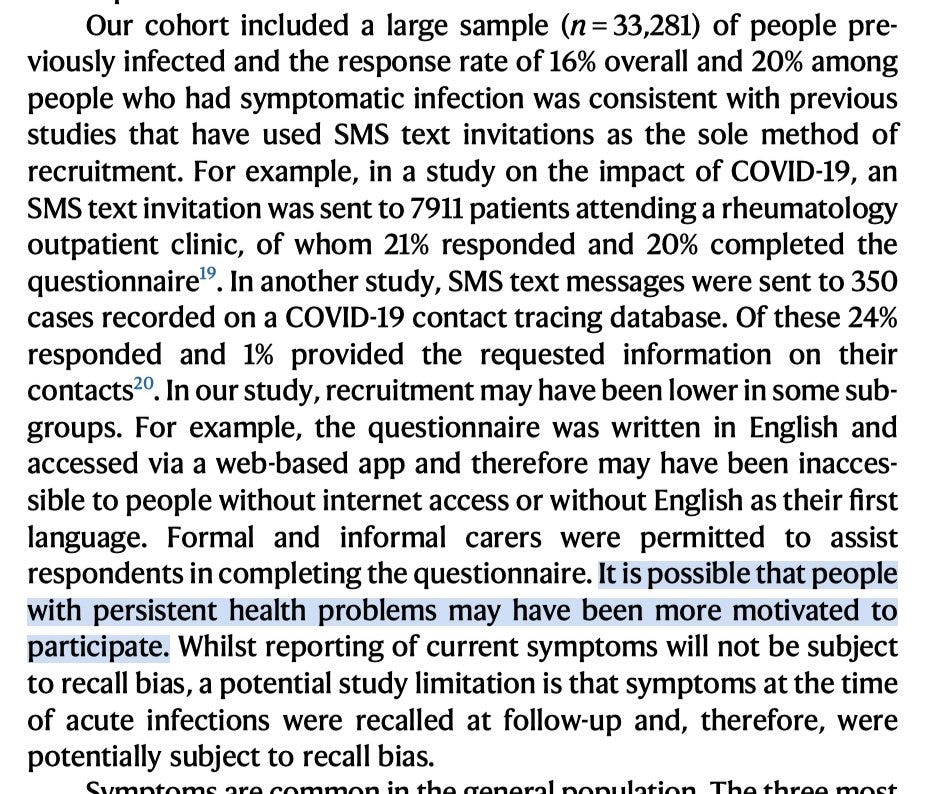
Yes. That does seem possible.
And unless you use that to claim the result as fact in the former “paper of record.”

Another Long Covid Study Suffers From Sample Bias
Nate Silver offers an official Bad Use of Polling.
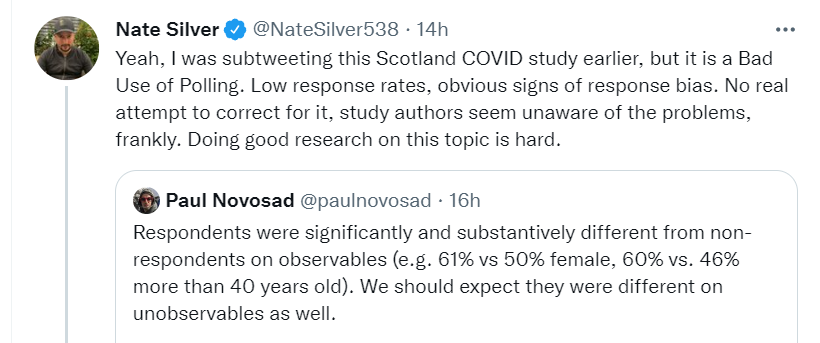
And this excellent point:


One can still learn, if you know your limitations. If you can’t do it, don’t do it. If you can do it badly or not at all, sometimes it is better to do it badly – with your eyes open.
One last note by Zeynep in her thread.

Long Covid Claims Framed To Mislead Public
For this one we have ABC, reporting that Covid ‘could’ ‘age the organs several years.’
Given this is a ‘could’ with no frequency claims, and ‘aging an organ’ lacks a clear meaning, I can’t say the claims are false exactly. I can say that the natural interpretations of such claims would show up in the population-level data. They don’t.
Physical World Modeling
New studies out, Weekend Editor summarizes.
Couple nice papers out this week, assessing the real-world effectiveness of Molnupiravir and Paxlovid, as used in British and Hong Kong hospitals.
Summary seems to be: Molnupiravir is not effective against hospitalization, weakly effective against in-hospital progression and death. Paxlovid is effective against all 3, with superior effect size from the hazard ratio.
The odor from the Molnupiravir trial (where one cohort had good efficacy, and the second had negative efficacy) isn’t going away.
I wrote up a little explainer of the results.
I’m fully willing to file Molunpiravir as a failure not worth messing with at this point.
Eric Topol claims (study) that five days of isolation is insufficient to prevent infection, you need negative tests, based on study that does not look at whether anyone was infected. Good to have this data on testing in robust form.
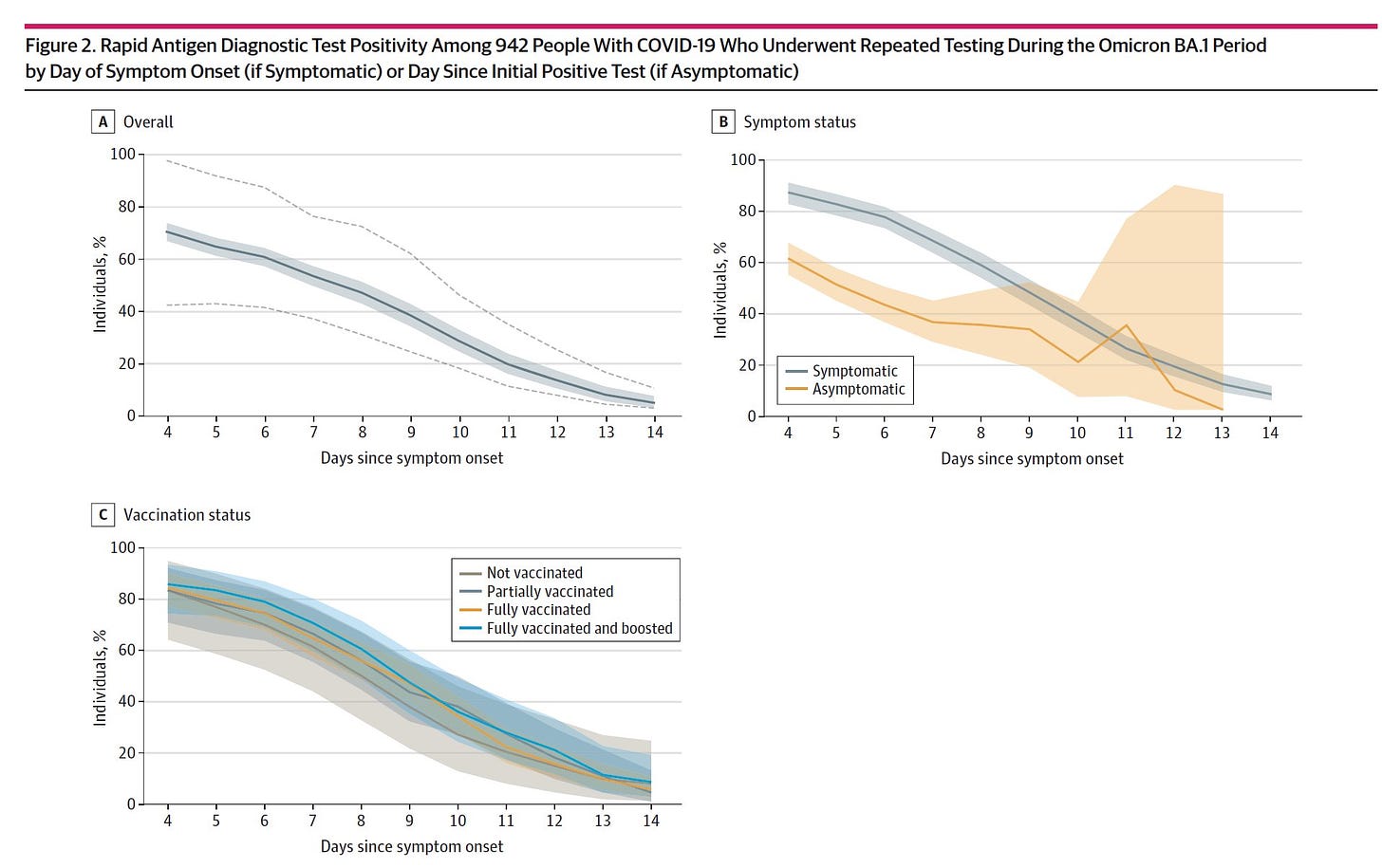
What this study did not do was attempt to measure infectiousness. So this new data that isn’t all that new, in practice, changes nothing. If you continue to have symptoms of the thing you are sick with, Covid or otherwise, it is generally not a good idea to leave isolation. If you don’t, then compare the ‘tests positive’ chart to the ‘symptomatic’ chart, consider various factors, and do something sensible.
CEO of Pfizer ‘admits’ that Covid vaccines ‘don’t reduce transmission’ is of course being treated by the Usual Suspects as a scandal. It is worth noting that the claim is false. The Covid vaccines absolutely do reduce transmission. They do not prevent it, and they reduce it less than they used to, but do not pretend they have no impact on transmission anymore, that is silly.
The New Hotness in this is to rewrite history to make it some sort of overreach and mistake to have previously claimed that the vaccines reduce transmission.
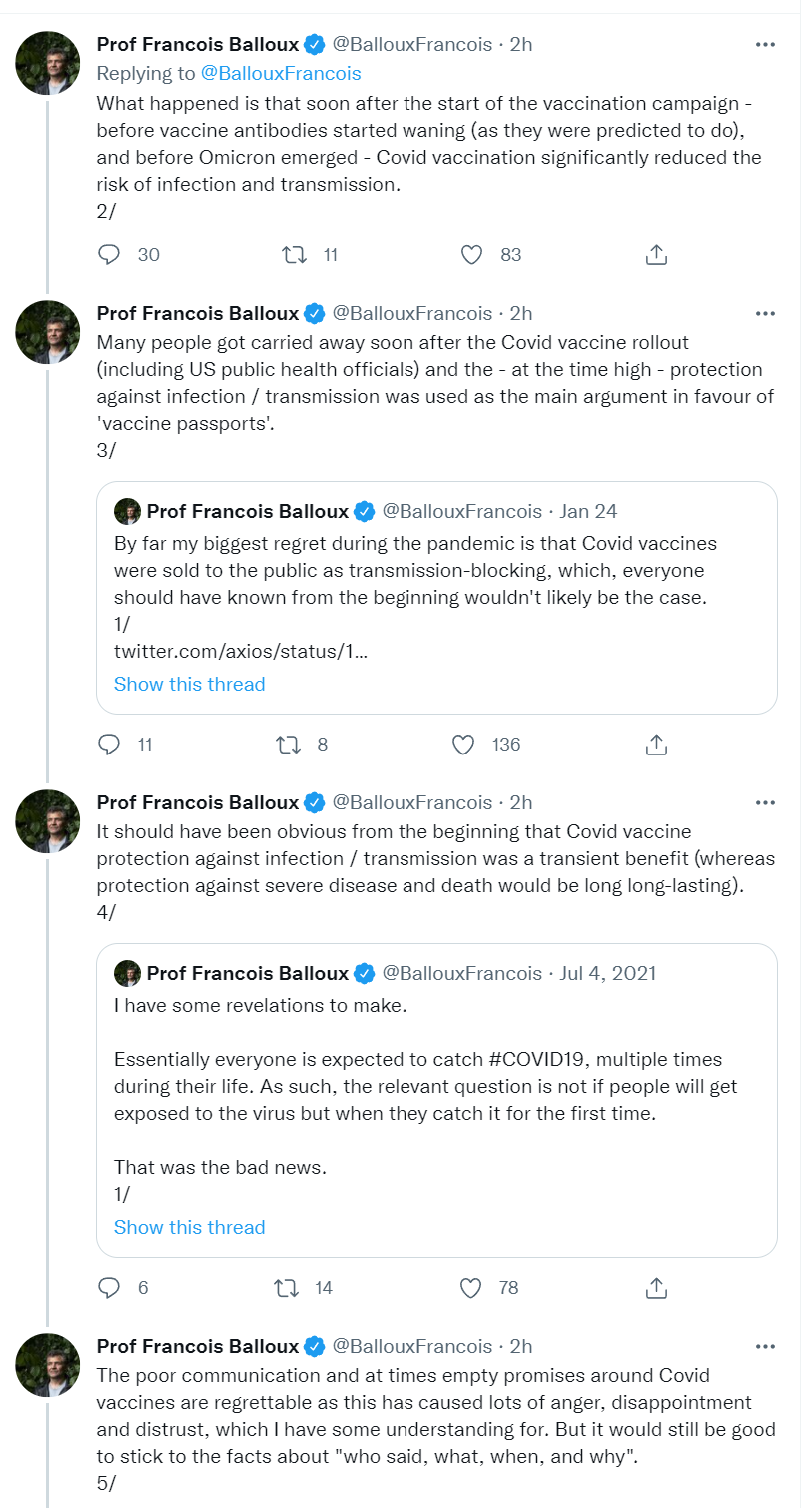

The vaccines absolutely were sold to the public as a means of preventing transmission.
This wasn’t merely a rhetorical device, as Balloux notes. It was used to argue for and mandate vaccine passports.
It also very importantly meant that when someone was vaccinated, we then let them live their life in a sane fashion, and stopped shaming them for things such as ‘talking to a friend’ or ‘going in to work.’ Which was a very good thing. This was, indeed, the most important benefit of vaccination, that we collectively agreed to let life resume.
Take all of that away, and the number of people who got vaccinated would have been much, much smaller. I do not take seriously anyone who claims that, if they had to do it over again, they would prefer that we pretend that the vaccines failed to do this, when they obviously did do it.
Also note the whole ‘well obviously vaccines would lose effectiveness over time’ revision – we definitely knew that was possible. It wasn’t inevitable.
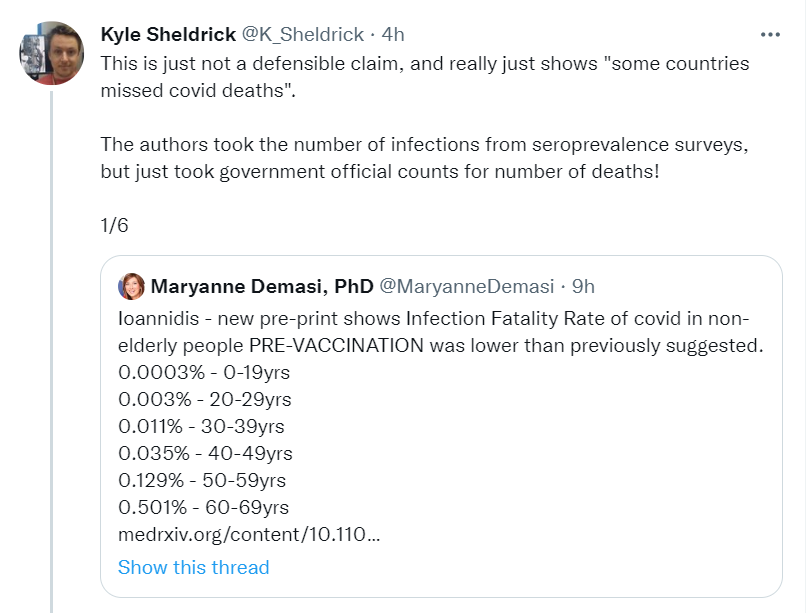
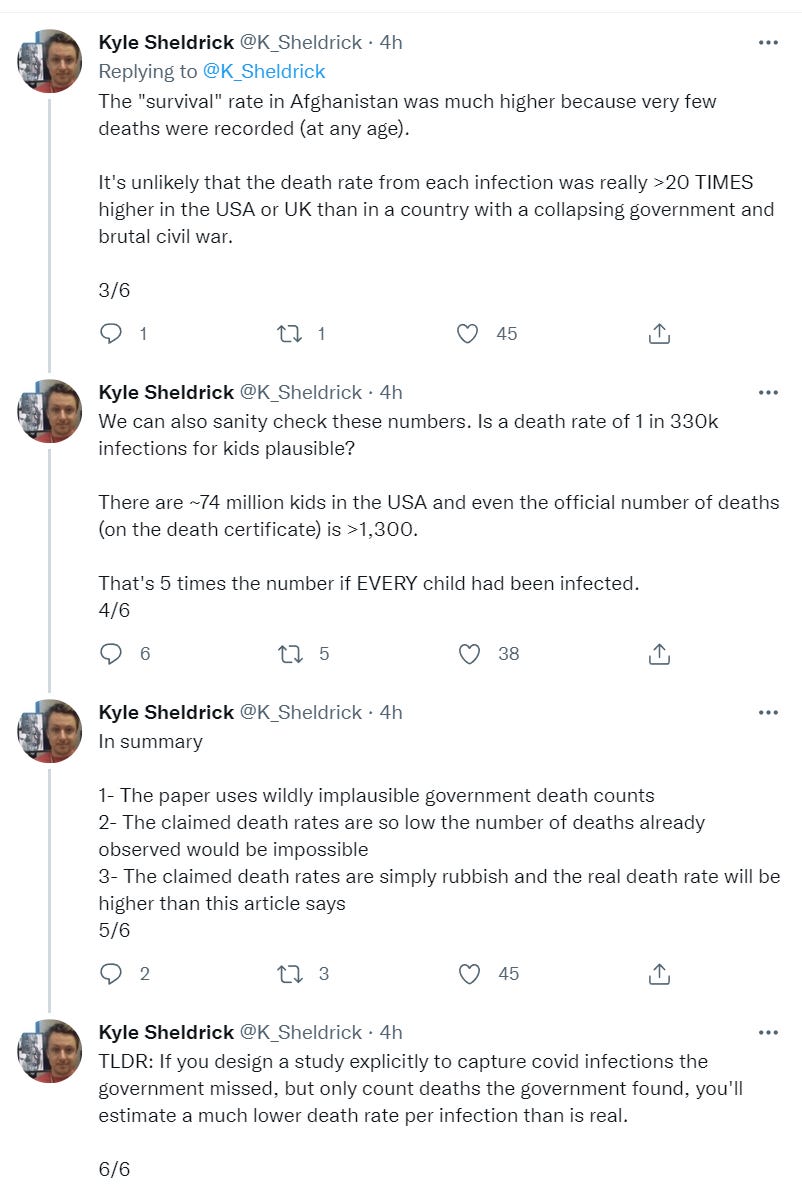
Yes, well.
That is pretty stupidly terrible.
Is it cheating, though, if you don’t merge the countries together? That depends on if you think the government in question is overcounting or undercounting Covid-19 deaths. In Afghanistan the ‘death rate’ implied by this calculation makes no sense, and using that as part of your data set makes no sense. In the United States, where there are essentially no excess deaths to explain, it is less clear. Are there more deaths ‘with Covid’ or attributed to it in error, or more deaths from Covid-19 that are attributed to something else in error?
I do not know. I do think it is plausibly close.
Here’s a chart from the paper.
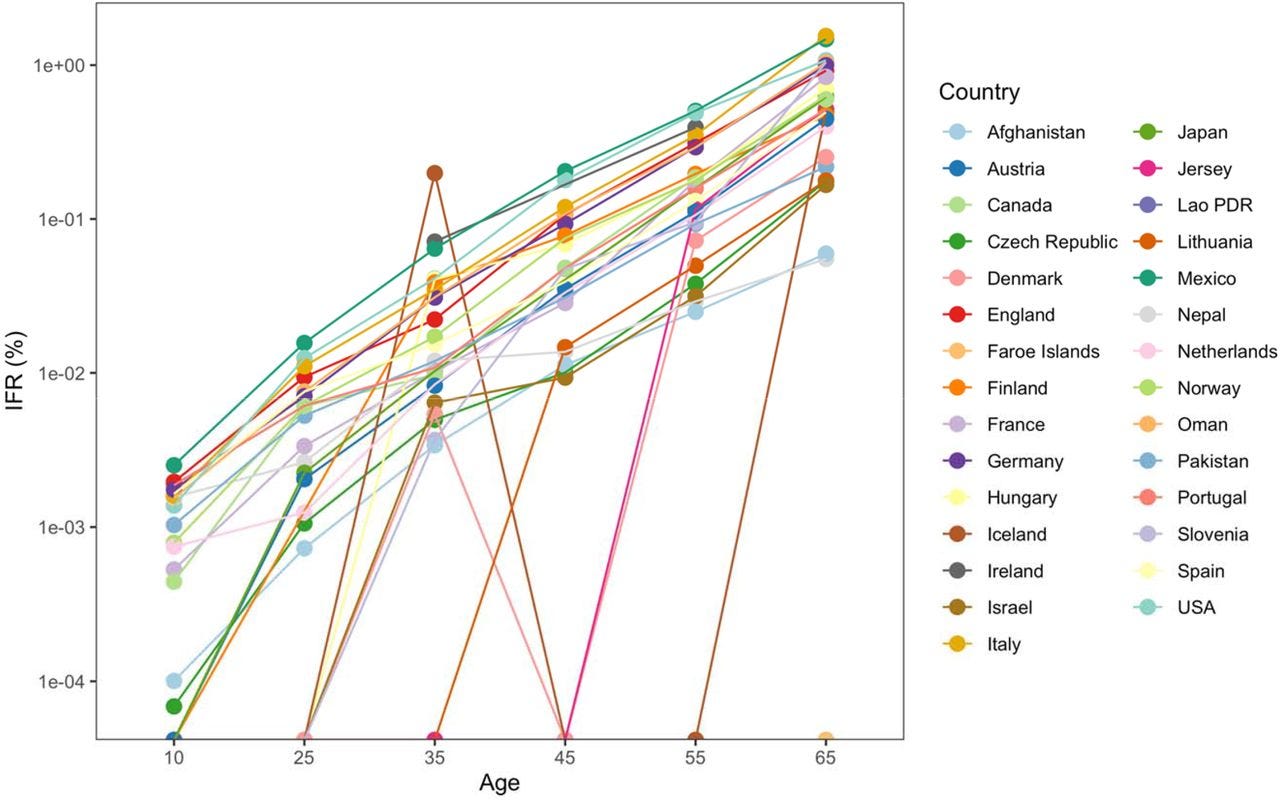
That blue line at the top is the United States. A fair conclusion would be to say that the United States line is probably about accurate, while the other lines mostly reflect failure to report deaths. Where does that put us? In a much less insane state, half an order of magnitude higher, that could plausibly pass sanity checks and is not inconsistent with previous models.
Can We At Least Ban Gain of Function Research?
Imagine the worst thing you could do that doesn’t involve nuclear weapons. Then imagine someone went ahead and did it, and published, and it was all not only legal. It was funded. Here in America.
What goes through your head when you read a headline like this?

Is it this? Cause it should be this:

The good news is that this (paper) isn’t quite as crazy as it sounds, I guess?
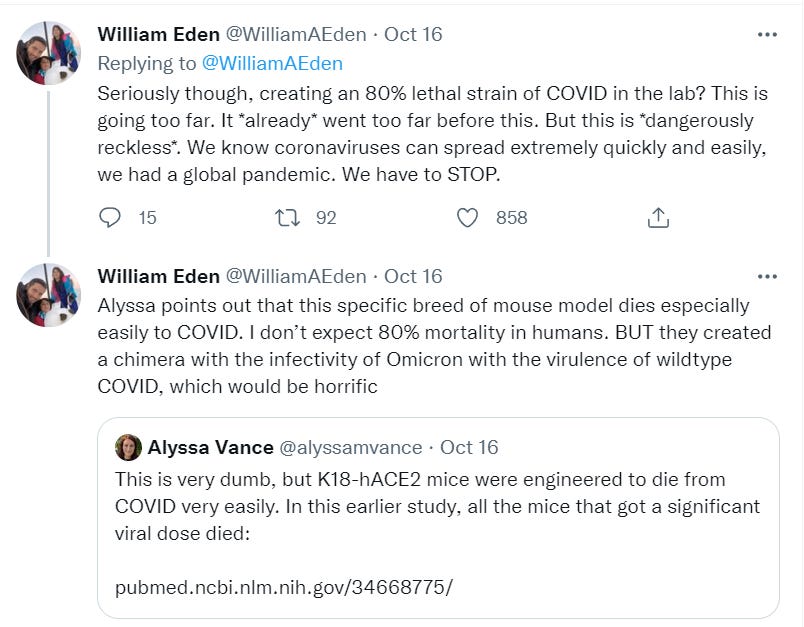
It wouldn’t actually have 80% mortality in humans when it leaked out. It would still be horrific, and plausibly put our entire civilization in danger.
Did Covid-19 leak from a lab? We will probably never know. What we do know is that lab leaks are historically common. If you create it, there is a chance it will mistakenly get out, on top of any chance it is stolen and/or deliberately released. If you create a virus like this, that is capable of creating a new potentially far worse pandemic, you are doing the worst possible thing and risking everything. If you keep doing this, eventually one such thing will get out.
We are literally creating the next, likely far worse, pandemic. On purpose.


Here is the full statement from the NIH director.
Based on outbreaks of coronaviruses caused by animal to human transmissions such as in Asia in 2003 that caused Severe Acute Respiratory Syndrome(link is external) (SARS), and in Saudi Arabia in 2012 that caused Middle East Respiratory Syndrome(link is external) (MERS), NIH and the National Institute of Allergy and Infectious Diseases (NIAID) have for many years supported grants to learn more about viruses lurking in bats and other mammals that have the potential to spill over to humans and cause widespread disease.
However, neither NIH nor NIAID have ever approved any grant that would have supported “gain-of-function” research on coronaviruses that would have increased their transmissibility or lethality for humans. NIH strongly supports the need for further investigation by the World Health Organization (WHO) into the origins of the SARS-CoV-2 coronavirus. Working with a cross-regional coalition of 13 countries(link is external), we urge the WHO to begin the second phase of their study without delay.
Alex Tabarrok covers this here.
If we cannot stop funding the creation of future pandemics, if we cannot hold accountable those who do this, what else is there to say?
One could pretend we didn’t fund this, I suppose?

In response to questioning from STAT, the National Institute of Allergy and Infectious Diseases, which had awarded two grants to the research group, said on Monday that it should have been informed about the nature of the work beforehand, in order for a review to be conducted.
…
But the policy only applies to work of this type that is funded by the federal government. And NIAID money was not used for this research, Corley said.
Some funding from NIAID went towards work that might be considered foundational to the questioned research. Corley said the team used some of the federal funds to develop a system for making plasmids it would need to do the later work.
…
“It is a murky world, but in our view because the funding was not supporting the work that was supported in this paper, that it wasn’t necessary to report it to NIH,” he said.
Except, well…

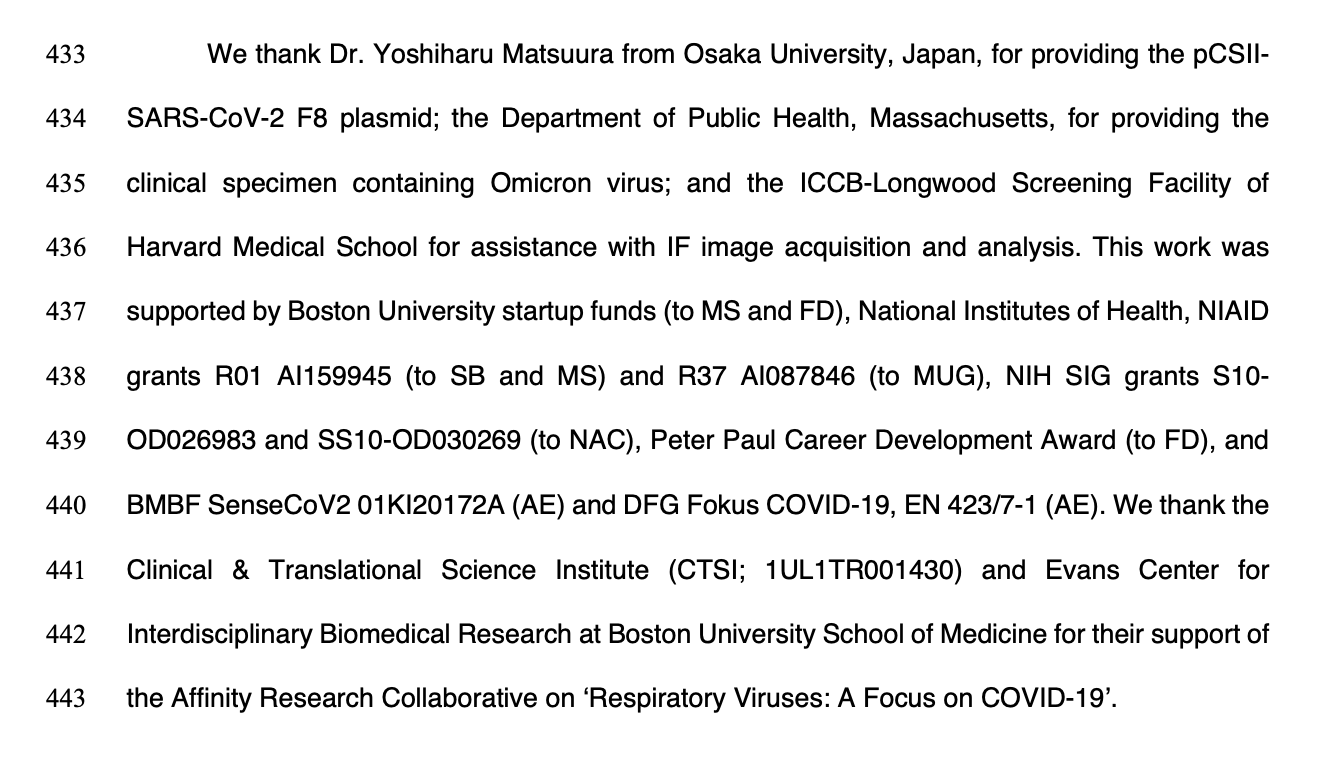
Or you could put on full clown makeup and say it wasn’t gain of function research?
Corley also challenged the notion that the work done by scientist Mohsan Saeed and colleagues was what is known as “gain of function” research. The group created a hybrid or chimeric virus — in which the spike protein of an Omicron version of SARS-2 was fused to a virus of the Wuhan strain, the original version that emerged from China in 2020. Omicron viruses first emerged in late 2021 and have since splintered into multiple different subvariants.
I mean that sure sounds to me like gain of function research. Marc Lipsitch here feels the need to confirm yes, this is unquestionably gain-of-function. He rips them to shreds in rather disturbing fashion.
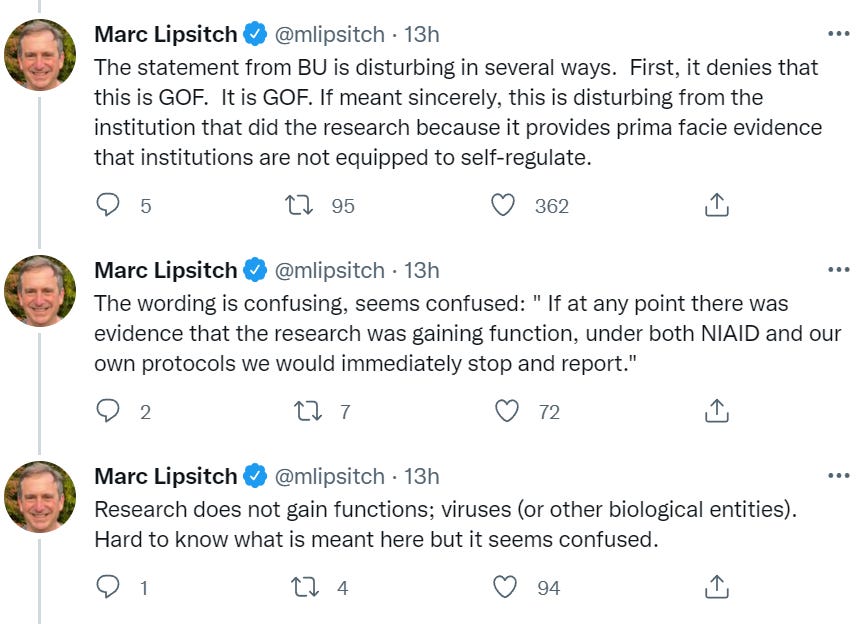
You have to love the attitude of ‘we might cause a pandemic but that’s all right we are not required to report this so it is fine:’

I suggest they, ahem, be required to report this (and ideally also required to not do it).
Or, if we’re not using that wordfor some reason, In Reference Class Of Things That Should Be Highly Illegal Because They Might Cause a Pandemic.
Those who defend this research claim it will help us defend against future pandemics. In theory this is of course possible. In practice it is highly unlikely. This kind of work was absolutely explicitly done on Coronaviruses, looking in exactly the right places, whether or not that resulted in the Covid-19 pandemic, funding going to people who are now being funded to go back and do that again. Great. What did that get us?
Nothing, of course. It had nothing to do with the development of any useful response. We did not learn how the virus spreads, or develop or deploy faster any therapeutic or NPI, or speed up development of a vaccine. All the limiting factors on such developments were legal or regulatory requirements, combined with logistics timelines, in ways that such work cannot assist us.
Could that be different if things were sufficiently worse? If there really was an 80% lethal otherwise identical version of Omicron, would we be able to throw the rules out the window and do what is right? I would still like to think so, although I have doubts. Would this kind of work, in expectation, then speed things up substantially? My answer is still a no. I do not see how this helps with any of the hard steps, or where it accelerates our timeline more than one or two days at most.
The better practical question now is, how do we make this change? Balsa is mostly about getting restrictions out of the way to let people build and do things. This is an exception. Do not do this! Do not build this! How do we write a law that stops people from doing and building this?
(Actually asking. I’ll be investigating, but what do we know?)
Permanent Midnight
NYT urges us to do the whole holiday Covid paranoia dance once again. Which, at this point, means ‘forever.’
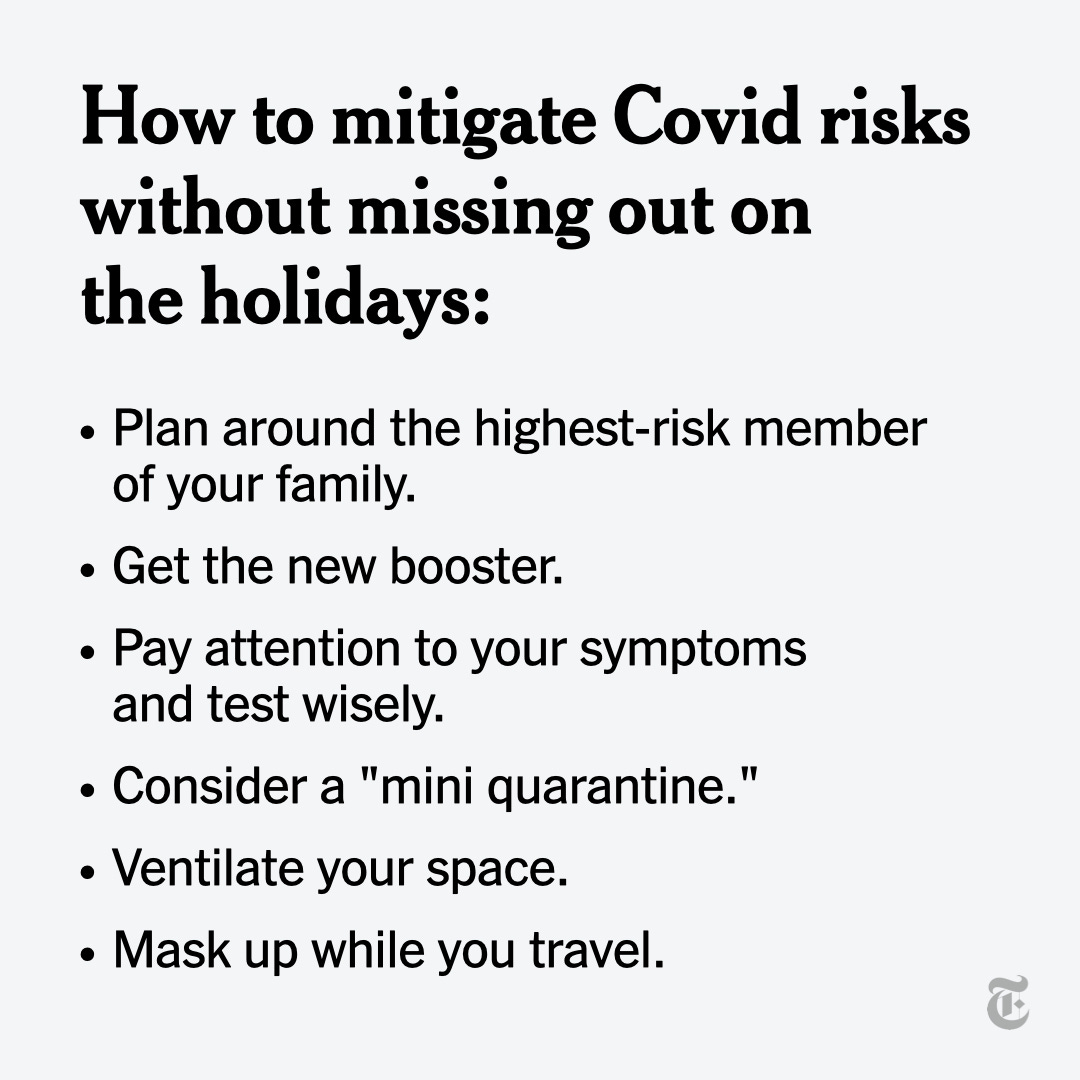
Via MR: 10% of Americans to do permanent social distancing, 45% to do so in limited ways. This could easily end up being the biggest downside of the pandemic.
You Want It To Be One Way
My plan would have worked if the world was completely different.
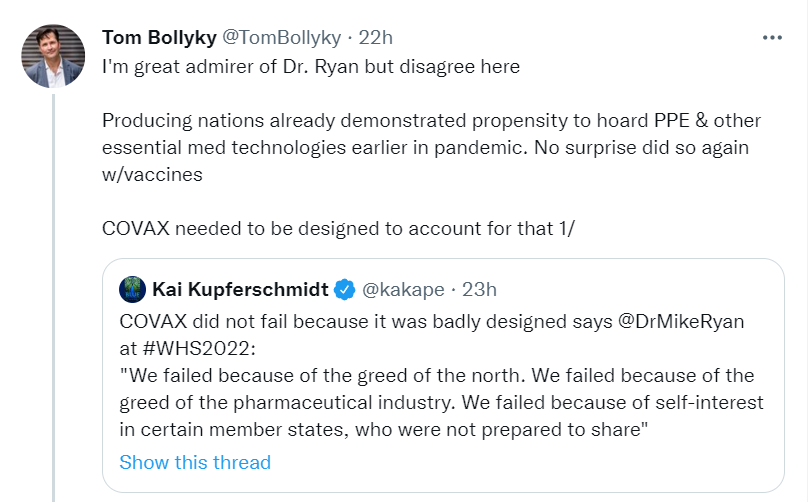
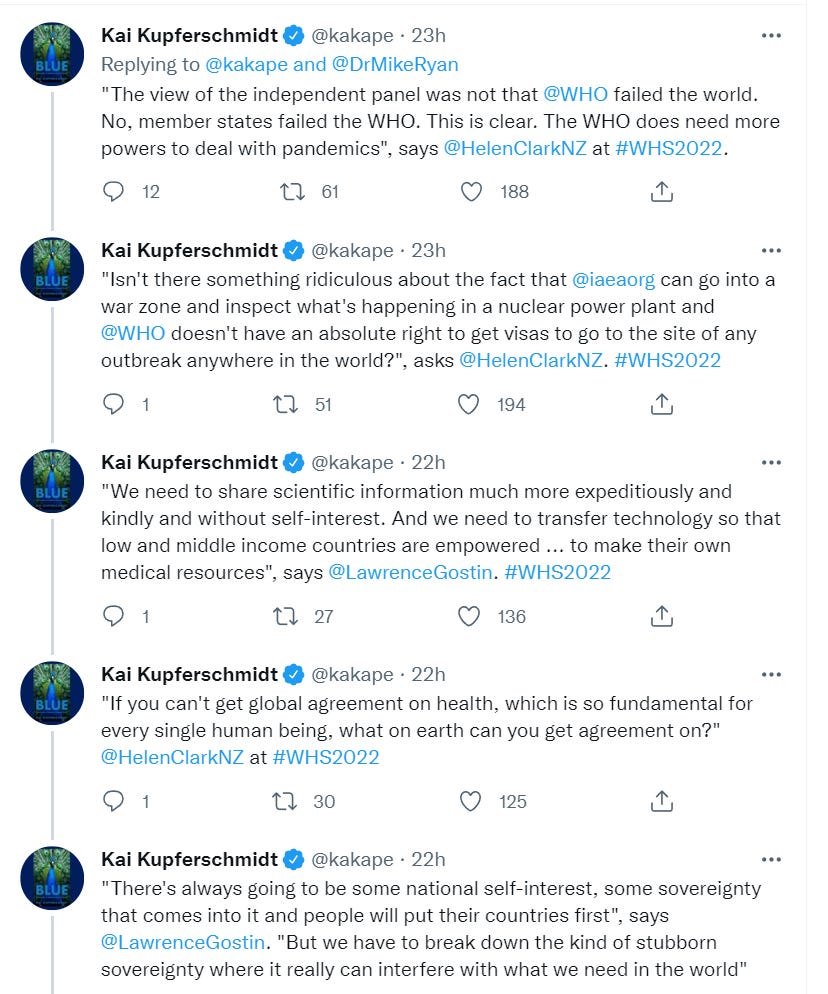

The WHO did not fail the world, says WHO. No, ‘the member states failed the WHO’ by not turning over all their resources to the WHO. They failed the WHO by caring about their own citizens first. They failed the WHO by not giving away all of their sovereign rights whenever someone said the word health, and agreeing to whatever Public Health Officials said.
True Public Health, like socialism, continues to never have been tried.
Happy Birthday, Bob Wachter
Sorry about your imminent cancellation from Public Health Twitter.

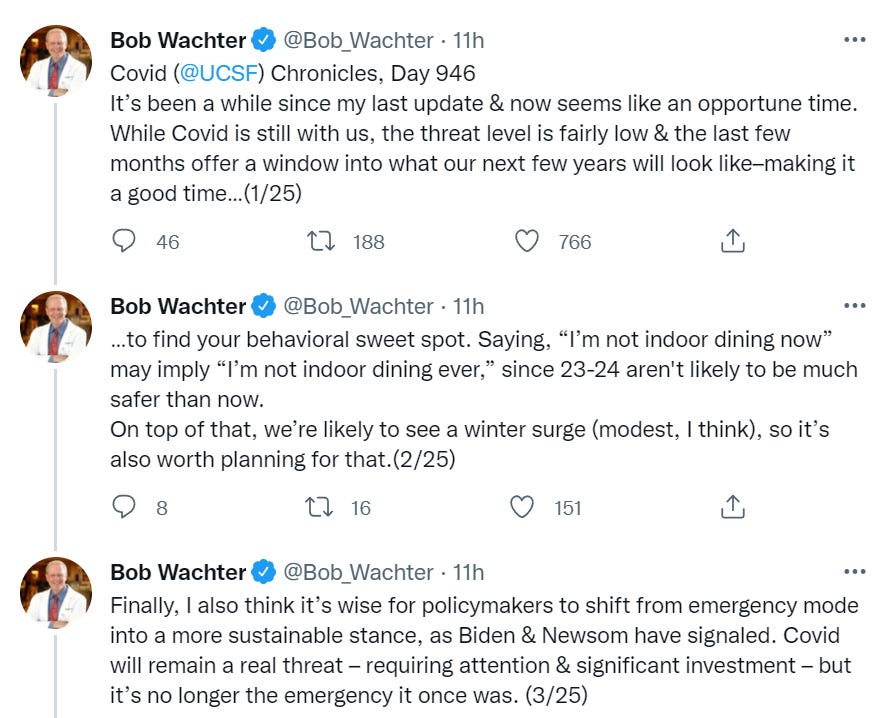
I kid about the cancellation. I hope.
Other Medical, Medical Science and Pandemics News
We have something that works on Alzheimer’s. It’s called exercise.
Paper claiming to measure costs and benefits of pandemic prevention.
The FDA wants to withdraw approval for the drug Makena on the grounds that it doesn’t, what’s the word for this, work. They did a small study at first, and it looked like Makena worked. So the FDA approved pending more data, at which point the price was jacked up to $8,000, and taxpayers effectively got the bill. Then they did a bigger study, in which Makena didn’t work. For some strange reason, those cashing the checks didn’t want the checks to stop, so this is taking a while.
FDA staff told the inspector general’s office that the Makena case is “an example of how lengthy and burdensome the withdrawal process may be when a sponsor disagrees with FDA’s decision to withdraw a drug’s approval,” according to the report.
The FDA’s fight to pull Makena, which is intended for people carrying one child who have a history of going into early labor, from the market has dragged on even though clinical trial results in 2019 showed it wasn’t effective on either preventing delivery before 35 weeks of pregnancy or reducing the risk of adverse conditions in premature newborns.
…
The FDA’s drug center proposed in October 2020 that Makena’s approval be withdrawn, giving the owners of both the brand-name drug and its generics an opportunity to request a hearing.
It is strangely comforting in some ways to know the FDA is equally impossibly slow in both directions.
Of course, now that the drug has been approved, it is impossible to study it here, which is why the study was conducted overseas, which in turn led to complaints about the composition of those in the study.
Leaving the drug on the market also would make it more difficult to continue studying its effectiveness, the FDA said, since the best way to gather that data — and trump the negative outcome seen in the earlier confirmatory trial — is through a randomized, placebo-controlled trial.
But that would be nearly impossible to do in the U.S., the FDA said, since patients who wouldn’t want to risk being assigned the placebo could avoid it by not enrolling in the study at all, while still having access to an FDA-approved drug.
The problem is compounded by ‘advocates for black women’ crying that it would be unfair to them to deny them access to this drug, that (probably) does not work. As opposed to it being rather unfair to them to give them a drug that does not work.
Scott Gottlieb continues to argue that FDA should more often need to give approval before people can offer tests. My mind boggles that one can think, after the pandemic, the problem with testing is not enough FDA barriers in the way.
Alex Tabarrok says Telemedicine is dying. This seems overstated. Yes, emergency waivers are fading. Needless stupid requirements are once again in place, doing things like forcing people to cross state borders and find a wi-fi spot in order to talk to their doctor. This is bad, we should fix this, and by default we won’t.
That does not mean that telemedicine will die. As the first comment says, docs like it. Patients like it. Insurance companies doubtless like it. It will recede from its pandemic peaks a bit more, to be sure, yet it is surely here to stay. How long will it take regulations to stop getting in the way? Silly question, they will always needlessly get in the way. How long until they get in the way less? Gradually over time is my assumption.
The larger your state, the less of an issue ‘can’t cross state lines’ poses, and over time the state-line mismatches can mostly be unwound if necessary – it’s a deadweight loss but not a dealbreaker. It is the outright bans (or requirements) that matter more.
Nate Silver on adjusting for cofounders and selection effects.
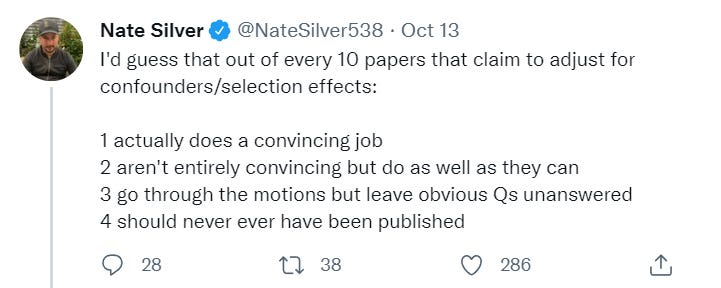
This distribution seems at least plausible. Adjusting for confounders is extremely difficult to do properly, and the incentives seem to mostly not be there.
Trust the science? Here’s researchers all given the same hypothesis to study, and what they found:
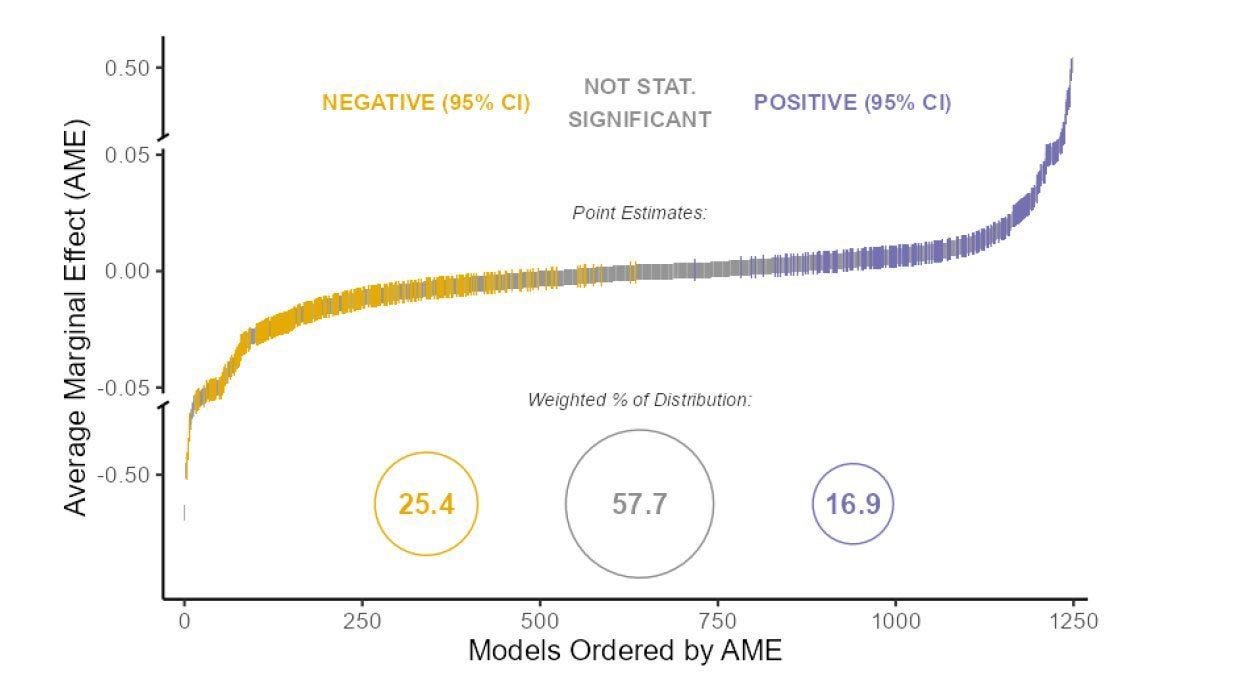
Atlantic article emphasizes need to have access to masks better than N95.

The post takes it as given in its intro that vaccines and antivirals can’t arrive in time. Whenever we are talking about what we can do better next time, it is important to realize what the vaccine timeline of an adequate civilization would have been – not fast enough in cases substantially worse than Covid, still much faster than we got. That’s doubly true of updates to the vaccine for variants.
The core thesis here is masks.
Two and a half years into this pandemic, it’s hard to believe that the masks widely available to us today are pretty much the same masks that were available to us in January 2020.
Is it, though? I do not find this hard to believe. Even if someone did invent a better mask, and the world wanted to beat a path to its door, do we look like the type of society that can get that approved and allowed and scaled up this quickly, complete with public buy-in?
There was not even a need for that. If you actually want a more effective mask, good news. We have them.
New products aside, there do already exist masks that outperform standard N95s in one way or another. Elastomeric respirators are reusable masks that you outfit with replaceable filters. Depending on the filter you use, the mask can be as effective as an N95 or even more so. When equipped with HEPA-quality filters, elastomerics filter out 99.97 percent of particles. And they come in both half-facepiece versions (which cover the nose and mouth) and full-facepiece versions (which also cover the eyes). Another option are PAPRs, or powered air-purifying respirators—hooded, battery-powered masks that cover the wearer’s entire head and constantly blow HEPA-filtered air for the wearer to breathe.
Yes, they are expensive and they look weird. So what? A bigger concern is that many of them are noisy, which in practice is a non-starter unless we were in a true nightmare scenario.
For this pandemic, people were offered P100 and other highly effective masks, authorities never mentioned them, and almost everyone turned them down. That is revealed preference. You can’t scale what won’t sell.
The nightmare scenario is where the post focuses.
In the apocalyptic scenarios that most worry them—which, to be clear, are speculative—bioterrorists release at least one highly transmissible pathogen with a lethality in the range of, say, 40 to 70 percent. (COVID’s is about 1 percent.) Because this would be a novel virus, we wouldn’t yet have vaccines or antivirals. The only way to avoid complete societal collapse would be to supply essential workers with PPE that they can be confident will provide infallible protection against infection—so-called perfect PPE. In such a scenario, N95s would be insufficient, Kevin Esvelt, an evolutionary biologist at MIT, told me: “70-percent-lethality virus, 95 percent protection—wouldn’t exactly fill me with confidence.”
There seems to be a confusion here between lethality and infectiousness. If there was a 70% lethal virus, there would be no choice to ‘let it rip’ no matter how infectious. We would go Virus Zero at any cost.
We will never stop worrying about the children. What about all the infections the children didn’t get during the pandemic? Oh no! Will they be all right?
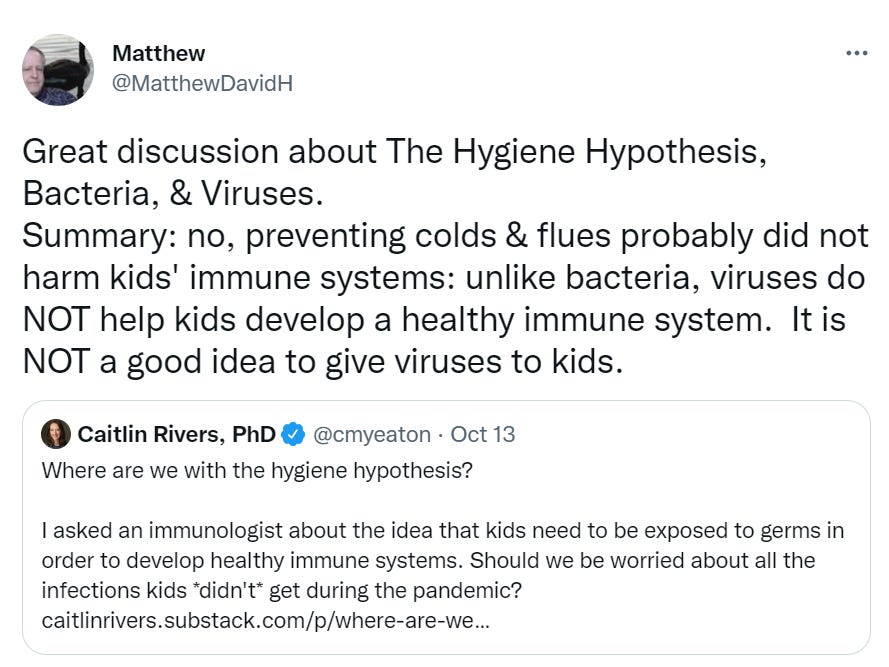
Post goes on to obsess over all the things you should be paranoid you are doing or not doing to promote or avoid harm to your child’s immune system and potential allergies.
Scott Gottlieb article calling on FDA to Do More, by making sure we Do Less.


Wow, 80%. That’s way higher than I would have guessed.
This is, I suppose, the ‘people think it’s regulated so we must do so’ argument.
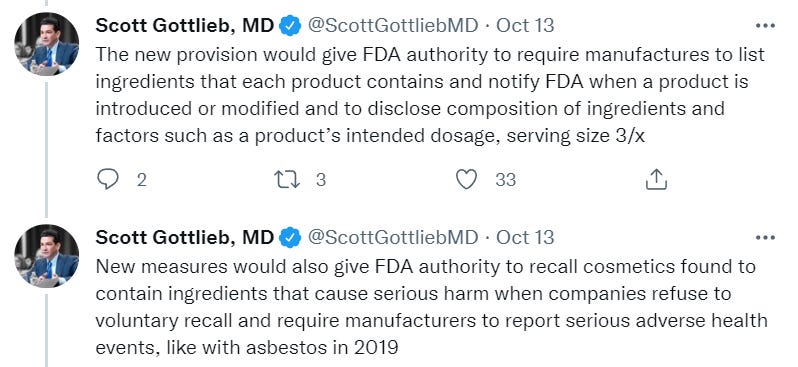
None of that sounds crazy yet it adds regulatory burden that would doubtless slow down and tax everything involved, while I doubt the benefits are substantial.

Oh, he wants to ban new diagnostic tests and allow collection of monopoly rents.

Promote. Innovation. You can’t make this stuff up.
16 comments
Comments sorted by top scores.
comment by Zac Hatfield-Dodds (zac-hatfield-dodds) · 2022-10-21T08:39:52.546Z · LW(p) · GW(p)
Re: that mouse study... I'm disappointed to feel I can't trust rationalist headlines without also personally checking for inconvenient details in the preprint and expert commentary (here's Derek Lowe in Science, or Helen Branswell in Stat.) For example:
- The chimeric mix(es) in the study (wild-type plus Omicron spike protein) have previously been observed in the wild, in humans, and were outcompeted by other circulating strains. Seems important to me!
- The question of which mutations to Covid drive vaccine escape sure do seem relevant to pandemic response to me! Of course in a coherently-competent world we wouldn't need this at all (remember that Australia and NZ both eliminated Covid with a short lockdown in early 2020?), but given the world we're actually in I'm a big fan of escape-resistant vaccines - and getting them approved and delivered faster.
- 80% of transgenic mice, not humans died (or got fairly ill and were euthanized) to the modified strain, compared to 100% (of transgenic mice, not humans) to the original Wuhan wild-type virus. IN MICE is one of the best-known reporting biases! There's literally a @justsaysinmice tweet about this study!
Yeah, there's clearly been some level of misbehavior here, and the institutional responses documented above are clownish. This is clearly in the genre of unacceptably risky work that probably created and then leaked pandemic Covid, which I wish we'd cut back on and confine to labs in the remote desert instead of dense cities.
But I don't think we'd be discussing this specific paper at all if the 80% MORTALITY! headlines hadn't been amplified, I don't think they were accurate, and I would prefer that we stop undermining the credibility of the rationalist community and important arguments against unacceptably risky research by failing to check the basic details before posting alarmist headlines.
If you must, I'd strongly prefer a framing like "This is another unfortunately-common example of research I think is unacceptably risky. Note the mismanagement, the inconsistent descriptions and justifications of this project and whether it constitutes 'gain of function', the history of bio lab leaks, etc. While research on immune escape could be valuable, reforming vaccine approval and distribution would be much more effective and less risky."
Replies from: Razied, sharmake-farah, ChristianKl, ChristianKl, NormanPerlmutter↑ comment by Noosphere89 (sharmake-farah) · 2022-10-21T12:30:03.913Z · LW(p) · GW(p)
Yeah, I strongly downvoted this due to the clickbaity nature of it's and would encourage others to strong downvote it too.
↑ comment by ChristianKl · 2022-10-21T12:18:03.501Z · LW(p) · GW(p)
The question of which mutations to Covid drive vaccine escape sure do seem relevant to pandemic response to me!
What would you do differently in regards to pandemic response if you have that knowledge?
Replies from: zac-hatfield-dodds↑ comment by Zac Hatfield-Dodds (zac-hatfield-dodds) · 2022-10-21T23:02:48.006Z · LW(p) · GW(p)
Mu. Ask "how does this knowledge actually affect pandemic response", not what I'd do. I claim personal expertise in neither case.
(If I could set policy we'd have driven at minimal cost (Covid was eradicable, and eliminated at several times in several countries!), had generic-coronavirus vaccine bases and pre-authorized challenge trials if that was infeasible, etc. In the world we're actually in, my understanding is that research like this feeds in to vaccine design, however far from ideal vaccine policy and delivery might be.)
Replies from: ChristianKl↑ comment by ChristianKl · 2022-10-22T07:43:00.805Z · LW(p) · GW(p)
I claim personal expertise in neither case.
Then why do you claim knowledge about it having effects?
generic-coronavirus vaccine bases and pre-authorized challenge trials if that was infeasible, etc. In the world we're actually in, my understanding is that research like this feeds in to vaccine design
There are already lots of different coronaviruses out there in the wild. If you create a generic-coronavirus vaccine that works for all of those in the wild, what do you expect to gain from knowing that it works for a tiny (relative to the existing pool of coronaviruses) portion of new lab-created viruses?
↑ comment by ChristianKl · 2022-10-21T09:32:20.722Z · LW(p) · GW(p)
But I don't think we'd be discussing this specific paper
Discussing COVID gain-of-function papers is important whether or not there are 80% MORTALITY claims. If Zvi would have heard of the paper he would have written about it in either case.
It's unclear to me which headline you considered misleading. Which rationalist outlet said in a headline something about 80% MORTALITY without mentioning that it's in mice?
Replies from: zac-hatfield-dodds↑ comment by Zac Hatfield-Dodds (zac-hatfield-dodds) · 2022-10-21T22:40:24.848Z · LW(p) · GW(p)
Baseline again, I strongly support not doing any research that might collect, create, or leak pandemic pathogens. Defining this study as "not gain of function" is only defensible on technicalities that make the term almost meaningless.
It's unclear to me which headline you considered misleading. Which rationalist outlet said in a headline something about 80% MORTALITY without mentioning that it's in mice?
I'm not complaining about "literally failing to mention mice", but rather "without appearing to know that the wild-type strain was 100% lethal to the same mice" - 'in (transgenic) mice' should be a signal that you need to read the study before using it as evidence. As an exemplar, I consider William A Eden's tweet (the opener to this post) to be irresponsible reporting.
Zvi's title for this post, "Covid 10/20/22: Wait, We Did WHAT?" is also more hyperbolic than I'd prefer, as is the opening: The what, in this case, was the type of thing that could cause another pandemic: ... None of the other developments should scare you. I disagree that we should be scared of this particular study; and while the system of institutions and incentives that supports such work does need to be dismantled, I think the rationalist response to this paper has undermined our credibility and had the wrong marginal impact.
There's a self-correction process at play here (and in Alyssa's tweet above), but we shouldn't make this kind of mistake in the first place and ought to correct it more quickly and comprehensively if we do.
Replies from: ChristianKl↑ comment by ChristianKl · 2022-10-22T07:47:11.991Z · LW(p) · GW(p)
The study and the reaction to it by the NHI are evidence that the system is malfunctioning. Researchers are still engaging in the type of research that can produce pandemics even if the chance of a single study doing so is likely less than 1%. The fact that this kind of research is done is scary.
I'm not complaining about "literally failing to mention mice", but rather "without appearing to know that the wild-type strain was 100% lethal to the same mice"
The fact that the wild-type strain was 100% doesn't really matter for the danger posed by the strain leaking. Sometimes there's a tradeoff between lethality and infectiousness for viruses.
If the headline would instead be "Researchers choose a virus with 100% lethality in mice and thought it was a good idea to add the Omicron spike protein to it that likely makes it more infectious to humans" I don't know why that would scare us any less.
The culture that produces this kind of apologism for dangerous research along with claims that speaking this way about dangerous research damages the credibility of the rationalist community is exactly where the problem is.
Status-based claims of "you should not take about X because you might lose credibility " are what people did when we talked about masks early in the pandemic and at all sorts of points where rationalists differed from the orthodox wisdom.
It's a necessary pre-condition to make any progress on sane progress of pandemic prevention to fight that kind of apologism.
Zvi didn't even mention that the researchers thought it was a good idea not to do the experiment under biosafety level 4.
Replies from: gwillen↑ comment by gwillen · 2022-10-23T02:02:27.753Z · LW(p) · GW(p)
It seems like you misunderstood something here: the "virus with 100% lethality in mice" was the original wild-type ("Wuhan") sars-cov-2 virus. It was the mice that were engineered for their susceptibility to it. That's why the 80% headline number is meaningless and alarmist to report in isolation: The new strain is 80% fatal in mice which were genetically engineered to be susceptible to original-flavor COVID, which is 100% fatal to them.
Replies from: ChristianKl↑ comment by ChristianKl · 2022-10-24T14:31:43.462Z · LW(p) · GW(p)
Are you somehow asserting that the original sars-cov-2 virus is not in the reference class of "very dangerous virus" and that I fail to understand that the original sars-cov-2 is not dangerous?
I just responded to Zac's assertion that we should look at the fact that it reduces lethality from 100% to 80%. He made the argument that this commission is a problem and I said why it doesn't.
You can also make an argument that it's important to talk about the fact that we are talking about the original strain but that's not an argument that Zac made.
But let's think about whether "it was the original COVID strain" should make us think that this wasn't a risky idea and see what their paper has to say about that.
From the actual paper:
We generated chimeric recombinant SARS-CoV-2 encoding the S45 gene of Omicron in the backbone of an ancestral SARS-CoV-2 isolate and compared this virus with the naturally circulating Omicron variant. The Omicron S-bearing virus robustly escapes vaccine-induced humoral immunity, mainly due to mutations in the receptor-48 binding motif (RBM), yet unlike naturally occurring Omicron, efficiently replicates in cell lines and primary-like distal lung cells. In K18-hACE2 mice, while Omicron causes mild, non-fatal infection, the Omicron S-carrying virus inflicts severe disease with a mortality rate of 80%. This indicates that while the vaccine escape of Omicron is defined by mutations in S, major determinants of viral pathogenicity reside outside of S.
The virus they created is more lethal than Omicron (in the mouse model) and more potentially more transmissible than the original COVID strain.
The mouse model in question is described in The K18-Human ACE2 Transgenic Mouse Model Recapitulates Non-severe and Severe COVID-19 in Response to an Infectious Dose of the SARS-CoV-2 Virus:
Here, we characterized the K18-hACE2 mouse model expressing human (h)ACE2 in mice, controlled by the human keratin 18 (K18) promoter, in the epithelia, including airway epithelial cells where SARS-CoV-2 infections typically start.
Given that those mice are more like humans than normal mice, I do think that a virus that's more lethal to them than Omicron also has a good chance of being more harmful to humans than Omicron.
While I think that you could excuse researchers who produce a modified virus with lower lethality and lower transmissible than an already existing virus, the idea that you don't want to do a virus that's either more lethal or more transmissible than existing viruses is a bad idea. Especially, the idea that not do those experiments under the best conditions for safety that's possible which would be biosafety level 4.
↑ comment by NormanPerlmutter · 2022-11-28T06:33:22.298Z · LW(p) · GW(p)
I read a lot of Derek Lowe early in the pandemic and regard him highly, but in this case I think he's wrong. Going through the comments of Lowe's post, I came across a link to this essay by a distinguished biologist, Stephen Salzberg, at Johns Hopkins agreeing with Zvi's perspective.
http://genome.fieldofscience.com/2022/10/gain-of-function-experiments-at-boston.html
Salzberg is a computational biologist, not a virologist, but he's a distinguished professor at a prestigious school and does not seem to be on the fringe politically as far as I can tell If anybody knows more about him, please let me know.
Overall, experts seem to be split on this matter. Which is strong enough evidence for me that the research should have been disallowed or at least regulated to the highest security level. The risks are just too great relative to what was learned from the research.
I have written a letter to my representative in the House encouraging her to legislate more restrictions on gain of function research and referencing the article linked above.
comment by trevor (TrevorWiesinger) · 2022-10-21T00:04:23.073Z · LW(p) · GW(p)
As far as understanding GOF research goes, I heavily recommend the first 30 pages of Arms and Influence (1966) by Thomas Schelling (yes, the Schelling).
Summary: credibly threatening to destroy the world with deranged offensive WMD activity (including research) tends to be a winning strategy for coercing rival superpowers into accepting a worse bargaining position, even if the adversary's leadership tries very hard to not establish a precedent of giving in to that type of coercion.
The strategic logic of why it tends to works so well is described mostly in the first 2 chapters of the book, which is one of the most well-known foreign affairs/diplomacy books in the field. If Balsa has research interns then it should definitely be on their list.
comment by ChristianKl · 2022-10-21T09:33:58.271Z · LW(p) · GW(p)
The better practical question now is, how do we make this change? Balsa is mostly about getting restrictions out of the way to let people build and do things. This is an exception. Do not do this! Do not build this! How do we write a law that stops people from doing and building this?
If people can openly say that something that's obviously gain of function isn't gain of function I'm not sure whether new laws are the main tool.
Fauci said under oath, that a paper that he mailed around with the title "Baric, Shi et al - Nature medicine - SARS Gain of function.pdf" doesn't contain any gain-of-functions. That seems to me like an egregious breaking of the oath.
Breaking an oath is a federal offense. If the Republicans take the house, there's some possibility of them doing an investigation into the whole mess that leads there.
comment by ChristianKl · 2022-10-21T12:40:03.516Z · LW(p) · GW(p)
Is it, though? I do not find this hard to believe. Even if someone did invent a better mask, and the world wanted to beat a path to its door, do we look like the type of society that can get that approved and allowed and scaled up this quickly, complete with public buy-in?
Having a perfect mask won't be easily achieved, but you could start by requiring FFP3 masks in all cases where medical workers currently require FFP2 masks.
There's a question of whether or not that would be overregulation, but reducing infection in hospitals would be a step that reduces overall transmissibility.
We could also put out innovation prices for new mask developments. An X-Prize for masks might be well-spent money. Certainly, it's much better to spend money there than for gain-of-function research when you care about pandemic prevention.
comment by ZachWeems · 2022-10-23T22:45:06.781Z · LW(p) · GW(p)
I think there's some confusion in your discussion of variant growth rates. Moritz Gerstung and Andy Slavitt are both quoting numbers around 10% per day, which corresponds to the new/old variant ratio having a ~7 day doubling time.
This is consistent with the CDC Nowcast.
For comparison, BA.1/Delta had a ~2.5 day doubling time, Delta/Alpha ratio about 5 days, and Alpha/wild about 12 days.